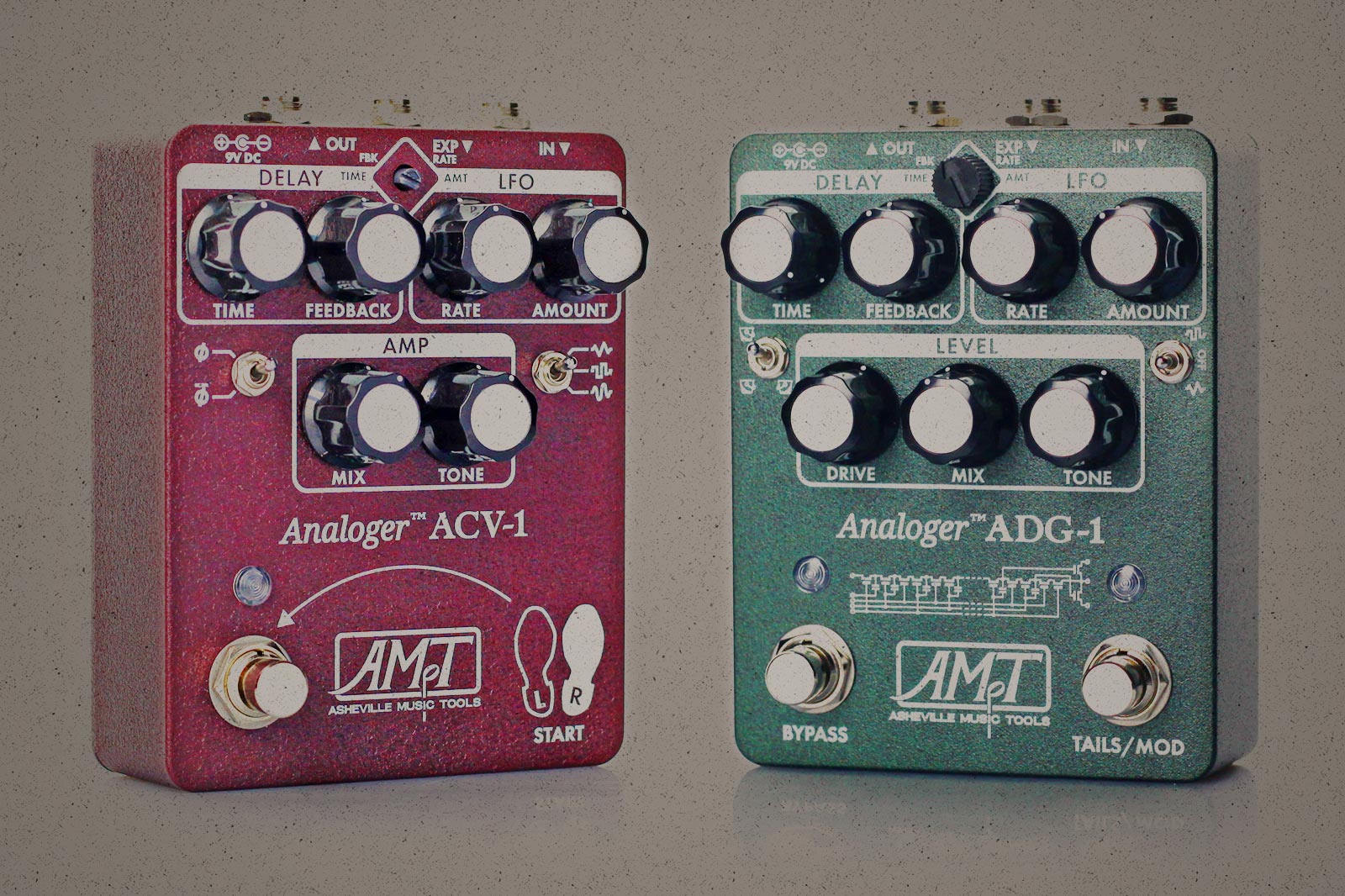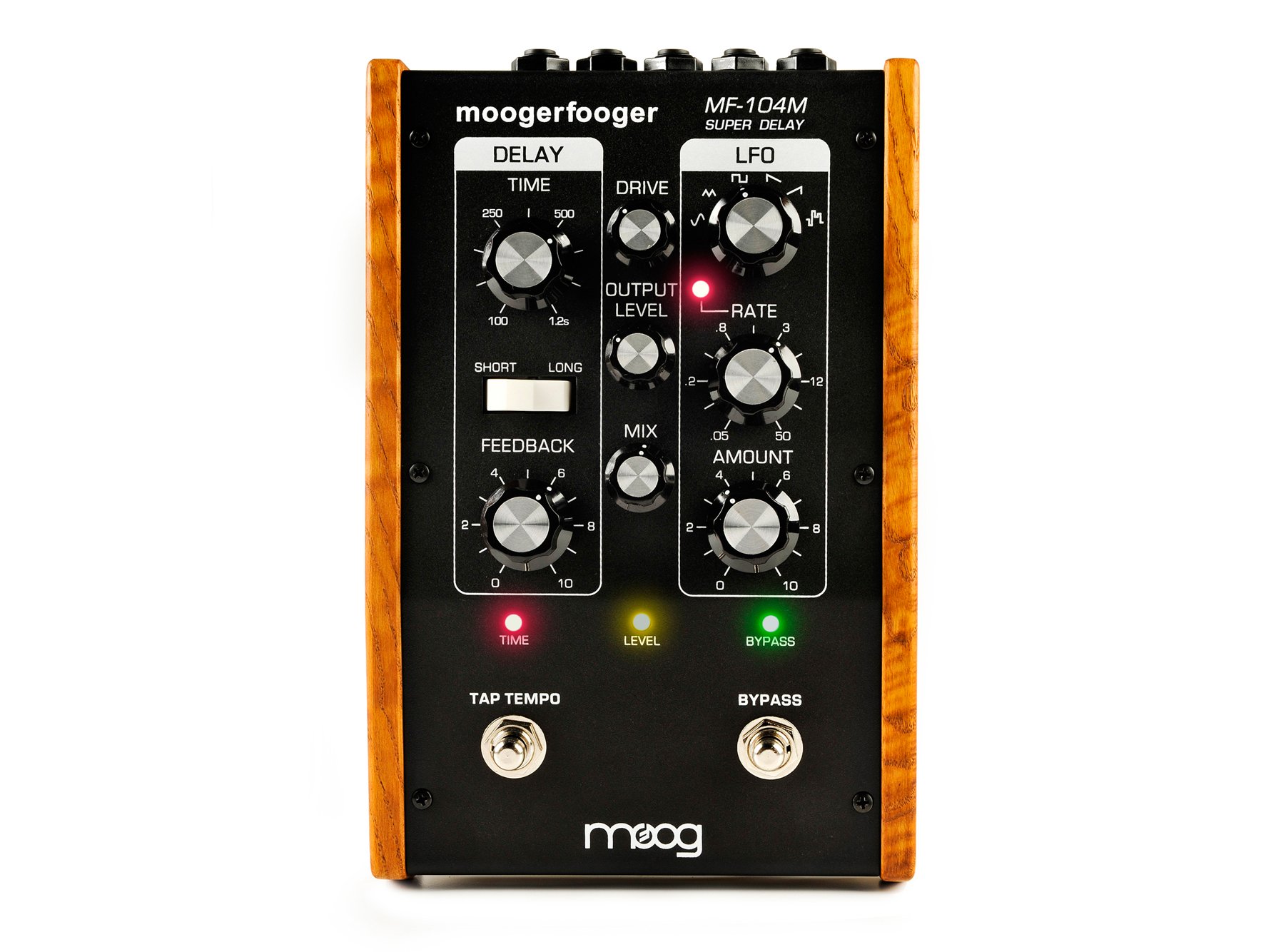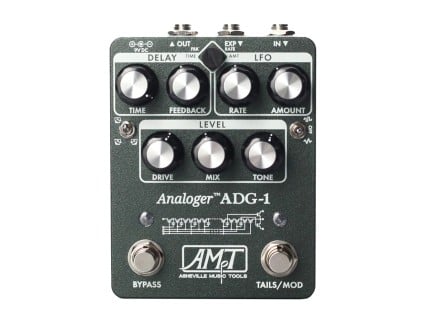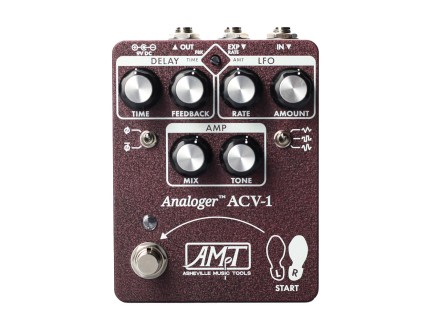Coinciding with the release of their new ACV-1 chorus pedal, we're excited to now be a dealer for Asheville Music Tools—makers of high-quality, sonically-adventurous effects pedals. Their first product, the ADG-1, quickly fell into the category of "if you know, you know" pedals. But although Asheville Music Tools is a relatively young company, their founder has been around the synthesizer and effects pedals industry for several years—and there's a good chance you've used or heard of some of their most well-known designs.
Introductions aside, let's get into what makes the Asheville Music Tools pedals special, and we'll share why we think they're a great fit for all kinds of instrumentalists and producers looking for some versatile time-based effects.
Continuing the Legacy of Beloved Effect Pedals
Founded by Rick "Hawker" Shaich, Asheville Music Tools represents the culmination of his years of experience designing for other brands. Fascinated by electronics since his pre-teen years, Shaich has made a decades-long career for himself working across the pro audio and music technology industries. It's this versatile background that not only provided the valuable experience to craft the intricate circuits that go into his pedals but also allow them to be versatile and suitable for not only guitar and bass, but synthesizers, drum machines, and all kinds of other instruments.
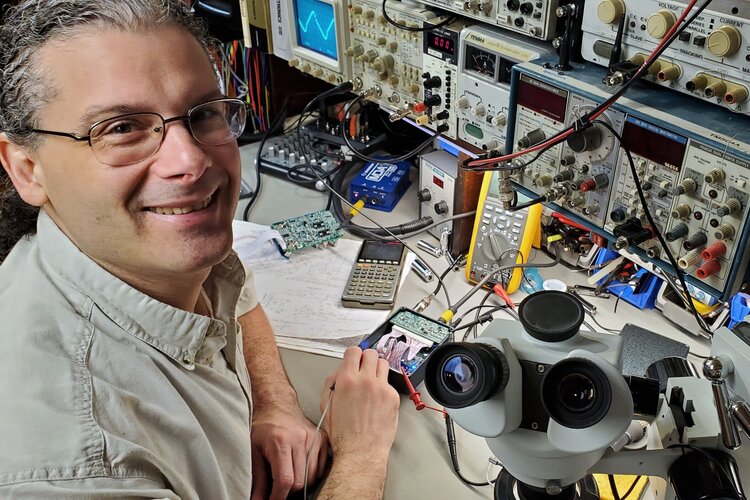 Founder Rick "Hawker" Shaich, courtesy of Asheville Music Tools
Founder Rick "Hawker" Shaich, courtesy of Asheville Music Tools
Perhaps most notably, Shaich was one of the main engineers behind Moog's Moogerfooger line of pedals, which remain some of the most highly-regarded and sought-after effects pedals ever made. While they were in production, these were large, well-made effects that boasted superb sound and clever functionality, with control voltage inputs for various controls to provide compatibility with synthesizers and modular systems. Of course, some models like the MF-101 Lowpass Filter adapt classic synthesizer-style circuits to pedal format and made sense for a company like Moog to produce, given that their history is effectively built upon the sound of their rich filters.
But out of all of the Moogerfoogers, two models that frequently caught people's attention with their adventurous sounds were the MF-104 Analog Delay and MF-108M Cluster Flux. Both of these pedals are based on analog bucket-brigade delay (BBD) chips, with the MF-104 being more suitable for long, murky delays while the MF-108M excelled at chorus, vibrato, and flanger effects. But thanks to an abundance of panel controls and CV inputs, the parameterization and sound design capabilities of these pedals extends well beyond the norm. Both the Cluster Flux and a later version of the analog delay, the MF-104M, also supported MIDI, as denoted by the "M" at the end of their model name. This provided even more flexibility and options beneath the hood, allowing for automation from DAWs or remote parameter changes from any MIDI controller.
Sadly, all things must come to an end, as Moog ceased production on the Moogerfoogers in 2018 when their supply of antique parts began to diminish. But now working for himself as Asheville Music Tools, Shaich can address the continued demand for those classic effects, while also pushing the story of effects design forward to exciting new places. It's also worth mentioning that Shaich bounces ideas off of John Snyder, who has their own super-cool pedal company Electronic Audio Experiments, and the two of them partner together for the manufacturing and production of their respective brands.
The Asheville Music Tools Lineup
Quietly coming into the fold in the latter half of 2020, Asheville Music Tools released small batches of their very first pedal: the 100% analog ADG-1 delay. At its core, Shaich chose to utilize Xvive's MN3005 BBD, a modern recreation of the same Panasonic chips used in the MF-104. BBD delays are historically noisy and lack both clarity and dynamics, which was a big reason that pedal designers quickly jumped ship once digital delays became widely accessible. But this type of delay still boasts significant charm for its warmth and character, and incredible care went into designing the filters and compander which cushion audio signals going in and out of ADG-1's delay core. This ensures that all the important subtleties of your signals remain intact.
Don't be fooled—while the ADG-1 can sound about as good as a BBD delay could ever sound, it's not afraid to get weird, too. Feedback can be dialed into self-oscillation, but is kept under tight control to deliver plenty of drones and wild spaceship sounds without blowing up your ears. The LFO, which would traditionally be used for warbling pitch fluctuations on delay repeats, can also be pushed into audio rate for rumbling ring mod-like sounds and offers both triangle and square waveforms for smooth or stepped pitch changes. And for getting other members of your rig in on the fun, the Expression and CV input can be assigned to the Delay Time, Feedback, LFO Rate, and LFO Amount, which can push parameters farther than what is available on the panel controls and find sounds physically turning the knobs could never achieve.
While the ADG-1 continues the legacy of the MF-104, the just-released ACV-1 is the modern counterpart to the MF-108M. Once again, everything about this pedal is analog, right down to Xvive BBD at its core—this time the MN3007. Like the Cluster Flux, the ACV-1 is designed with short-time delay effects in mind, such as chorus—but that's merely a suggestion.
Unlike a lot of pedals in this category of effects, but just like the MF-108M before it, the ACV-1 has a variable Delay Time control, which traverses a range of various time-based effects. At its shortest times, it ventures into flanger and comb filter territories, but then morphs through choruses and eventually into slapback territory as the delay time is increased. In fact, this sort of time-warping behavior is part of what makes the ACV-1 interesting as a dynamic performance tool—spin that time knob or sweep an expression pedal to fly through different sonic dimensions!
Dialing in the Feedback control adds resonances and metallic characteristics to your sound, and the addition of a Feedback polarity toggle can invert the Feedback path for a different audio flavor. And for subtle to drastic movement, bring in the LFO with the Amount control—this is the key to moving from static honks and skronks to various wooshes and swooshes. This time, the LFO has three shapes: sine, triangle, and square—offering two shapes for vibrato and flanging effects and one for stepped pitch movements. And once again, the CV input offers ways to crack open your ACV-1 and find new sounds that the pedal can't achieve on its own.
Up, Up, and Away!
We come from a variety of musical backgrounds here at Perfect Circuit, covering guitar, bass, drums, and other instruments—all unified by our love of synthesizers and pro audio gear, of course. That's why up-and-coming brands like Asheville Music Tools fill us with excitement, because they don't just make devices for one crowd of musicians. They know there are so many ways to make music these days, so it only makes sense to create devices that can be appreciated in as many styles and instruments as possible. And because we know how beloved the Moogerfoogers are, we know this is going to be an exciting new chapter for Hawker and his crew.

